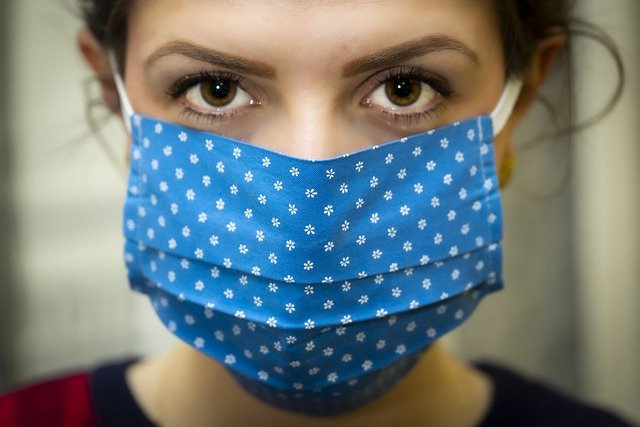The average person knows about 5,000 faces – from family and friends to the cashier at the local store. Most people can recognise familiar faces with ease, even from low quality images, or from photos that are many years old. We often recognise familiar faces even if we can’t remember a person’s name or how we know them.
Most of us take this ability to recognise familiar faces for granted – but when public health issues require our friends to mask up, covering their chins, lips, cheeks and noses, are our facial recognition skills scrambled?

We investigated this question in our recent study and compared the impact of masks (which cover the lower portion of the face) with that of sunglasses (which cover the eye region). Despite face masks covering a large proportion of our faces, we found that people find it surprisingly easy to recognise familiar faces behind masks – speaking to the remarkable versatility of this human skill.
Familiar faces
Identifying familiar faces is a useful day-to-day skill, but the identification of unfamiliar faces is also important in the context of forensic investigations and security scenarios. Our study measured the recognition of both familiar and unfamiliar faces.
We presented our participants with pairs of face images, and asked them to decide whether the faces belonged to the same person or different people. One image of the pair was always presented with no concealment, and the other showed either no concealment, an image in sunglasses, or in a face mask. Participants completed the task for familiar faces (images of celebrities) and for unfamiliar faces.
Even though face masks cover a significant part of the face, we found that our participants identified familiar faces in masks with around 90% accuracy – no worse than the results for faces wearing sunglasses, and only slightly worse than unconcealed faces.
These results demonstrate just how robust familiar face recognition can be. And our task only involved comparisons of still images of faces. It’s possible that in the real world, information from the body or gait or from clothing may supplement the reduced information from the masked face, increasing accuracy further.
For unfamiliar faces, both masks and sunglasses reduced recognition accuracy further. Face masks reduced performance the most, but only a little more than sunglasses. But with or without masks and sunglasses, recognising unfamiliar faces generally tends to be difficult and error-prone.
Still, some people are highly adept at this task. Super-recognisers – people who excel at recognising faces – were also recruited to complete the tasks by Professor Josh Davis from the University of Greenwich Face and Voice Recognition Lab database. Super-recognisers were also impaired by masks, but they performed far better than regular people in all concealment conditions.
Given that familiar face identification ability was barely impaired when faces were masked, why is it that humans recognise familiar faces so well? Humans may be born with an innate preference for face-like stimuli. We are so attuned to seeking out faces in our environment that we often pick out face-like patterns within objects or clouds – a phenomenon known as “face pareidolia”.
It has been suggested that face processing is adaptive – that our ancestors had an evolutionary advantage if they could tell the difference between a friend and a foe, which would help them decide who to approach and who to avoid.
The ability to recognise familiar faces is attributed to learning the different ways that the same face can look over different encounters, and learning how the face differs to other known faces. This makes unfamiliar face identification far more challenging, as these factors are unknown for a face that we have little experience with. For unfamiliar faces, we don’t know how a face varies across changes in pose, expression, lighting, or age – or how the face differs from other unknown faces.
Expert recognisers
How can this explain our surprisingly adept performance for identifying faces covered by masks? For familiar faces, we likely have enough experience with the face that we can make an identification based on the limited available information. We may have seen the face obscured before, or our representation of the full face is so strong that we can handle the reduction in visible features.
In contrast, for unfamiliar faces, we cannot rely on experience with the face. Super-recognisers are the anomalies here and, while it’s unclear why they’re so good at identifying faces, there is evidence that face recognition abilities may be genetic.
There are currently 7.4 billion faces on the planet. Though we’ll only ever encounter a tiny fraction of them, our ability to remember and recognise familiar faces is an evolutionary skill hundreds of thousands of years in the making. Our research shows it’s a skill barely affected when the faces in question are hidden by a mask.
Katie Gray is an Associate Professor in the Department of Psychology, Eilidh Noyes is a Senior Lecturer at the University of Huddersfield and Kay Ritchie is is a Senior Lecturer at the University of Lincoln.
This article is republished from The Conversation under a Creative Commons license.
